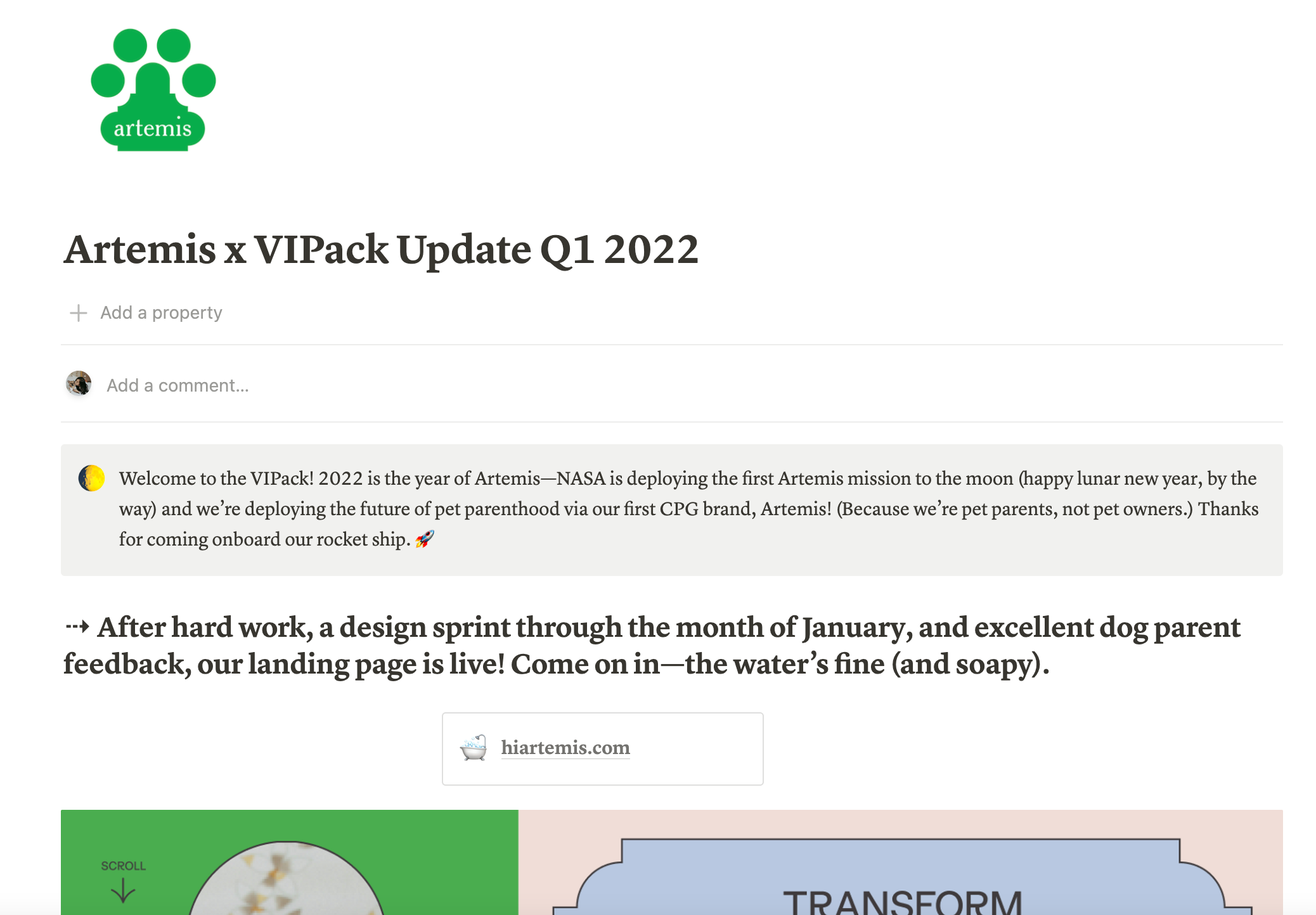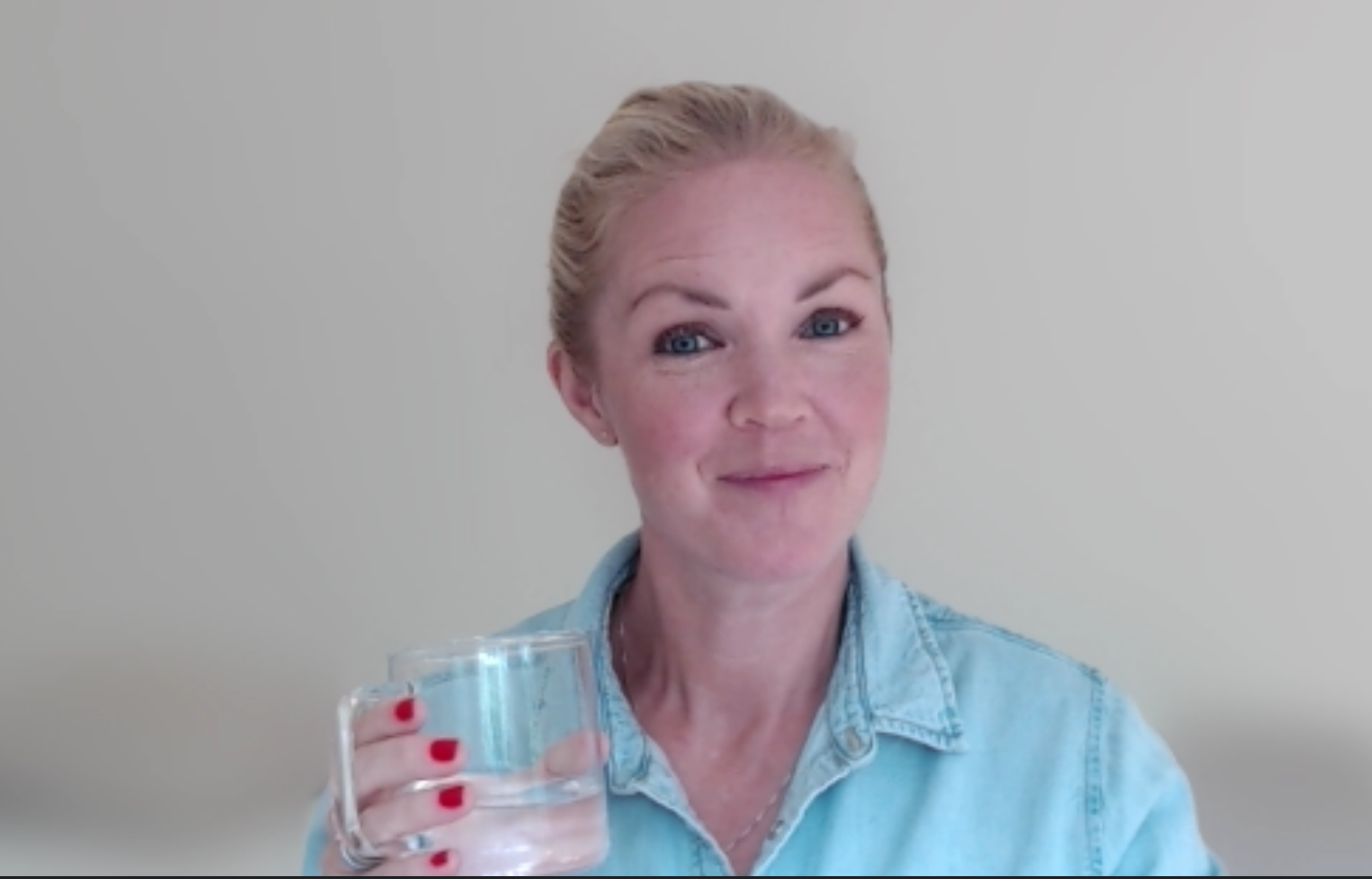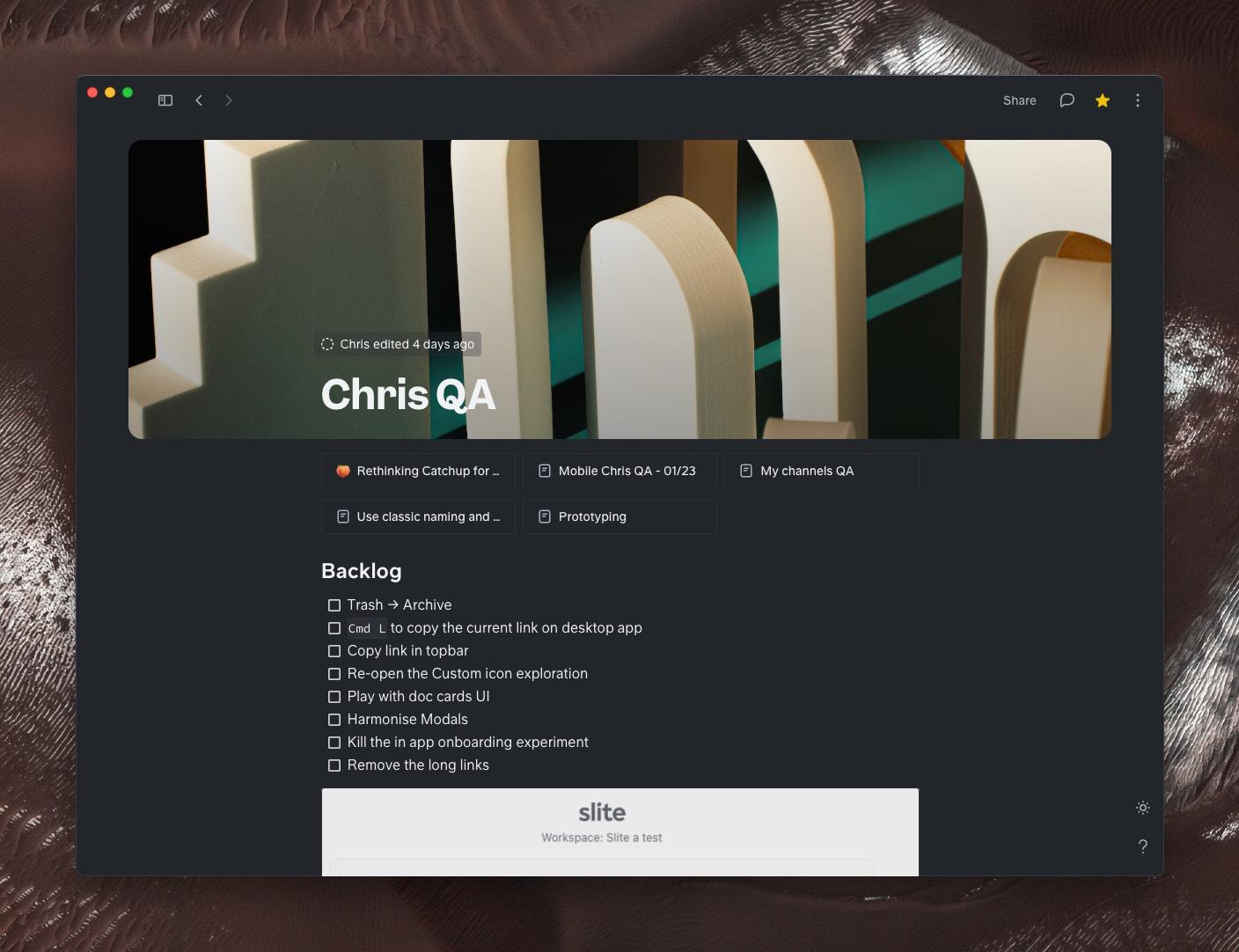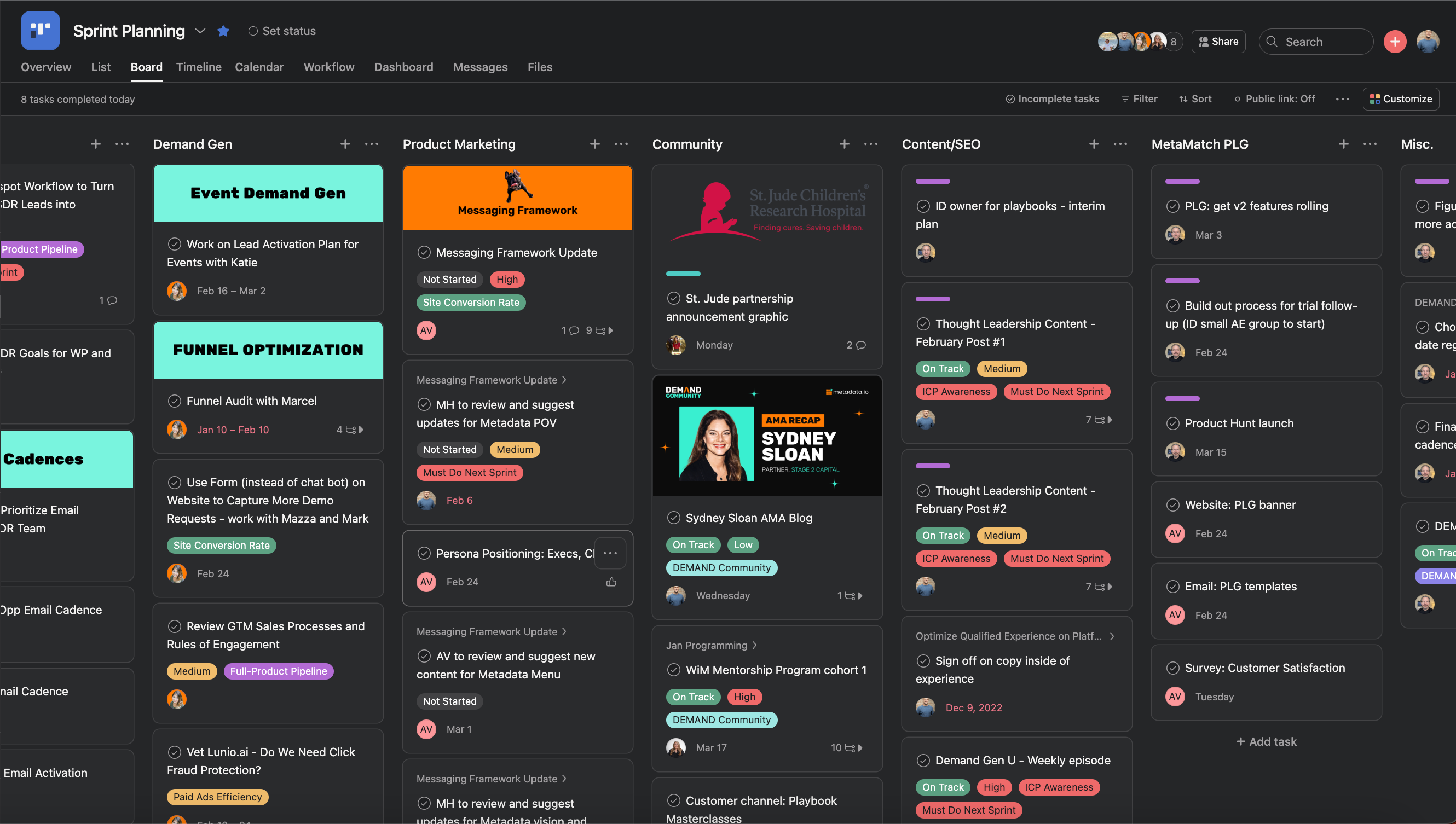Declutter your workspace, Part 1: Organization

Remote is the best way to work, but only if it's done intentionally. Think of it this way: if you see clutter on your physical desk, would you let it sit there forever?
Your digital workspace is no different. When your desktop is littered with stray documents, and endless tabs, stress and anxiety build.
The best remote leaders know how to keep their team workspaces clutter-free. We interviewed six of them to figure out their secrets and learn from their habits. And for ease of reading, we've divided their advice into 2 categories:
- Organization tips (that's this article, the one you're reading now)
- Communication tips (click if you want to skip to these)
"Organization" sounds broad, but in the context of remote teams, it's quite specific: it's how you structure written knowledge. Here are 6 insider tips to help anyone looking to streamline their workspace and tap into some digital calm.
Kevan Lee, Head of Marketing at Oyster
An experienced marketing leader, Kevan manages a team of 30+ people at hyper-growth HR startup Oyster.

Organization tip: Open documentation is great, but you need to proactively point employees to resources.
Remote workplace organization can swing between two extremes –– on one side, a “black hole” with little visible discussion, on the other an open-access content overload.
Transparency is better policy, but to balance open access means helping people navigate.
“[I try to] have everything be visible for those who want to go get it,” says Kevin, "But also to take some responsibility to surface the right things at the right time, when they're really important.”

Angela Guedes, Head of CX at Claap
As creators of a video messaging tool for businesses, the Claap team lives and breathes async communication. And as head of Customer Experience, Angela needs to keep her internal and external organization in check.

Organization tip: Use templates and views to give transparency without chaos
“We have a company-level discussion database, when anyone wants to brainstorm or reach a decision we open a discussion with a custom template. We have the same for to-do lists, which are in a public database,” Angela reports.
To keep documentation easy to use when anyone can start a discussion or add a page, “Claap uses filters and specific views of our discussions and databases so there isn’t too much clutter.”
Claap organizes their videos in a Claap workspace, naturally, and their team documentation in a separate Notion workspace.

Noël Duan, Founder and CEO of Artemis
A multihyphenate entrepreneur with experience in the D2C beauty space, Noël recently launched Artemis, a pet grooming care company. Their small team has big ambitions, and their internal worskpace reflects their priorities.

Organization tip: Leadership sets the tone in documentation.
“When you're starting a company, you have to think about culture. What habits are you setting?” asks Noël. “A lot of the things in a founder’s head are not obvious to other people.”
One way to pass on knowledge and instill a good culture is to show how you think and work in your documentation. Noël does this, hires for this, and encourages her team to pick up the habit:
“Our Head of Ops speaks a language of work that even I don't even necessarily understand. She has been setting processes into place for our business, and in order to preserve her expertise, we document meticulously.”

Hanna Larsson, Remote work and Go-to-market Advisor
Hanna Larsson knows a thing or two about scaling a company, having led growth at payroll and operations platform Remote. Now an advisor to startups, she understands how to get her hands dirty with documentation and knowledge management.

Organization tip: Good, clear documentation requires input from everyone.
It can be tempting for leadership to push documentation off their plates to someone lower on the org chart who is less busy. But sometimes the people with the most expertise can be the clearest and are the ones who need to set the standard.
Hanna’s rule for writing resources:
“No one is too senior to document.”
Chris Pasquier, CEO, Slite
Chris started out as a remote work skeptic, preferring to keep his colleagues close in Slite's original Paris HQ. But after years of building a product for managing internal organization, he has come round to the possibilities of a completely remote workspace - and his habits reflect his enthusiasm.

Organization tip: Don’t be afraid to do some good, old-fashioned weeding.
Documentation and discussions are living parts of your company, and they need to be tended to like any growing thing. Chris puts it best: “Dare to archive, remove, cut down things. You need to refactor your team knowledge the same way you refactor your code.”
"You need to refactor your team knowledge the same way you refactor your code.”
Setting aside some energy every quarter to clean up documentation can save time and headache down the line, when there are multiple versions of the same doc all with slightly different updates to collate.

Mark Huber, Head of Brand and Product Marketing, metadata.io
Metadata is a marketing automation platform, and as head of Brand and Product Marketing, Mark has a vested interest in making his own team's remote workflow go fast.
Organization tip: Working in sprints can keep things streamlined for any team.
Doing short-term marketing planning allows for Mark and his team to have dedicated and consistent approach to managing projects, updates and documentation. “We plan in two week sprints, with a meeting every other Friday to plan the next sprint and tackle roadblocks,” he says.
“From there, we make sure that everything has a specific owner and is in Asana and tagged with the correct status priority.”
This helps keep the team focused on for their larger goals and keeping details organized with a refresh and reset every other week.

Your tools can take you (almost) all the way
A badly managed and badly organized digital workspace creates stress, confusion and problems for everyone, no matter how good the tool is in theory.
But it's also clear from our conversations that a little thought and effort goes a long way. Documentation is everyone's job, and as people feel empowered to contribute, the better everyone's experience will be.
But documentation needs good communication to survive.
(This is Part 1 of the Digital Declutter Series. Click here for Part 2).
Want to explore more knowledge management insights from leaders?
Get your copy of our guide to knowledge management →

Written by Lauren Christiansen
Lauren Christiansen is a freelance marketer with a passion for content that helps teams work better, together. While she specializes in B2B SaaS professionally, in her spare time you can find her unplugged and hiking in the woods of New England.


